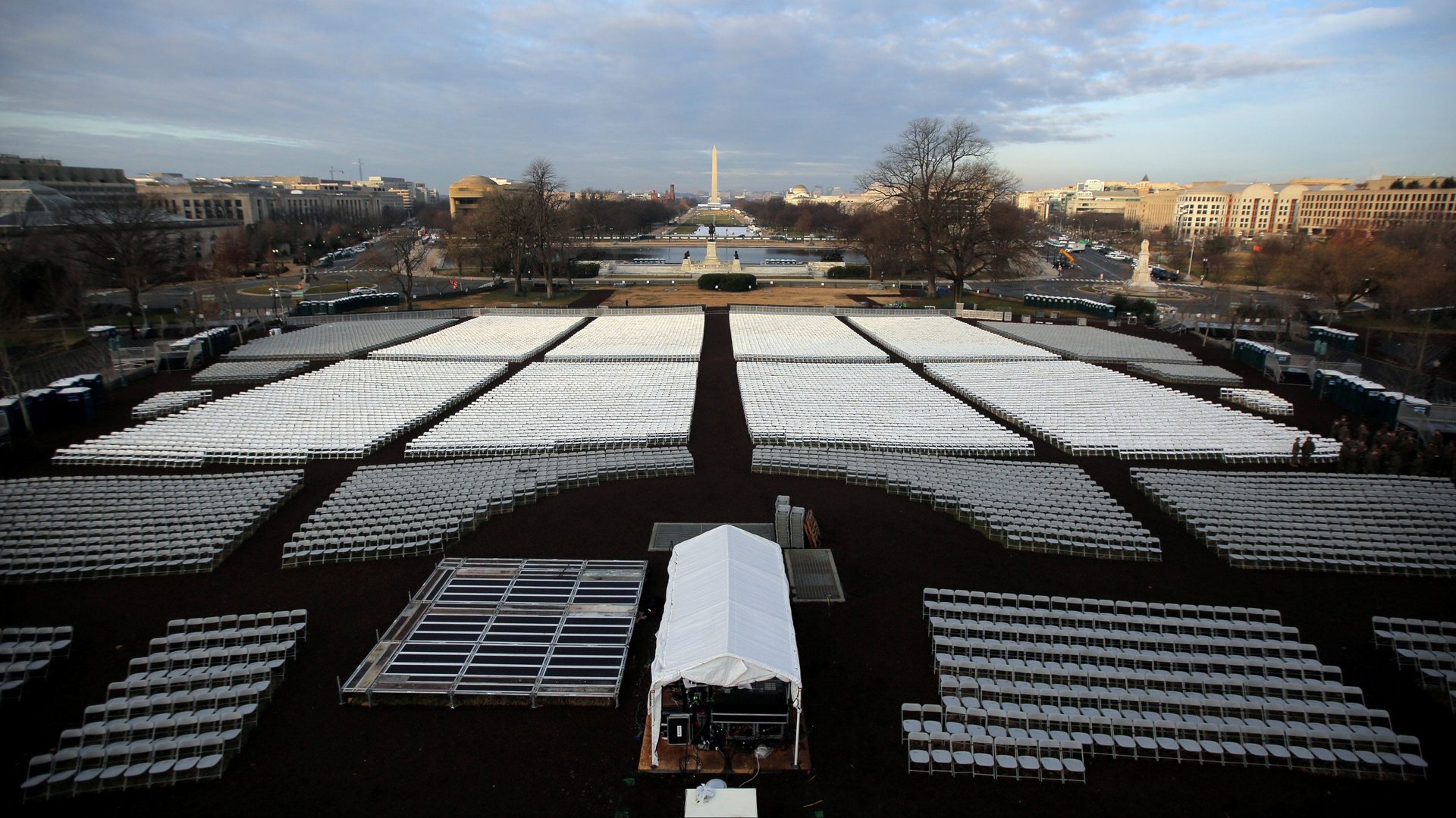There’s a psychological term for feeling like what you’re seeing isn’t real
The philosopher Jean Baudrillard posited in the 1970s that modernity ended when we became obsessed with life simulations, like television. He called the new period “postmodernity,” a time of the hyper-real—when imitations seem more real than reality—and predicted the distinction between fact and fiction would blur until it was gone. Today, the philosopher’s predictions seem to have materialized.


The philosopher Jean Baudrillard posited in the 1970s that modernity ended when we became obsessed with life simulations, like television. He called the new period “postmodernity,” a time of the hyper-real—when imitations seem more real than reality—and predicted the distinction between fact and fiction would blur until it was gone. Today, the philosopher’s predictions seem to have materialized.
Last year, un-reality reached new levels in a summer spent chasing virtual Pokémon Go characters, sometimes off of real cliffs. In the fall, fake news disseminated on social media influenced US elections, setting off an international crisis of authenticity. Digiday wrote that “Europe is in a state of high alert” as “the spread of false or misleading information via websites and social media is escalating”; in December 2016, the Malaysian government launched a campaign to teach its citizens to tell real news from fake; this month, the Czech government launched a specialized anti-fake news unit to educate the public on disinformation.
Post-truth was the Oxford English Dictionary’s word of 2016, in great part due to the presidential election of Donald Trump in the US. Famously unattached to facts, his run inspired a series of essays in The New Yorker on the untruths that fueled his campaign. But Slate’s Jamelle Bouie pointed out in November—after Trump won—that debunking him missed the point, as his lies are aspirational and “signal what might become reality.”
In sum, Donald Trump, was the ultimate postmodern candidate, because he was (and is) the editor-in-chief of the fake news movement. He became president because he treats facts as passé, not despite of it. Indeed, on Jan. 16, the Guardian noted, “Trump doesn’t let facts get in his way,” pointing out that his definition of “illegals” contravenes international law by including refugees.
The psychological impact of a post-truth world
Baudrillard’s hyper-real is here. Now. But it still feels like a transition period, as we lose distinctions between real and fake (and cling to them, perhaps futilely).
The effect of the transition is as if what is, isn’t real. This is clinically known as dissociation, and isn’t always an illness; it occurs on a spectrum and happens on some level innocuously when we daydream or perhaps even therapeutically when reading a book. But extreme dissociation—when real life no longer feels real and becomes unmanageable—is a psychological disorder.
In a society that is increasingly simulation-centric, the virtual world is ever more vivid and gratifying, and facing a relatively dingy and unrewarding reality can feel strange. As Rebecca Searles put it in a December story in The Atlantic, writing about dissociation and simulations, “Virtual reality can leave you with an existential hangover.”
In 2006, clinical psychologist Frederick Aardema conducted a study on the emotional effects of VR, and found that after interacting with simulations, people tend to feel detachment, which manifests in physical symptoms like headaches, dizziness, and fatigue, and feelings of disconnection. Aardema questioned participants about their emotions after exposure to VR and noted that the simulations lessened subjects’ sense of presence in reality; in other words, they did not feel they were exactly in the world.
In the most extreme cases, Aardema says, dissociation manifests in a condition called derealization (DR), which renders life bland, discolored, drab, and emotionally dull. (DR is related to but not the same as depersonalization, where the self feels unreal.) DR can be a disorder unto itself or a symptom of other neurological and psychiatric diseases, as well as a symptom of chronic Lyme’s disease.
Too much unreality apparently makes people sick. In China, internet addiction is a common disorder in children; it’s characterized by apathy in real life. Clinics there reportedly engage in draconian rehabilitation measures, mandating total media withdrawal for the youths for months, until reality is palatable to them again.
Why humans are so fooled by simulations
Still, simulations aren’t all bad. Thinking is a simulation that influences life, as noted in a 2016 study by social psychologists from the London School of Economics and Boston University. They write, “The permeable boundary between thought and reality leads simulations to sometimes produce the same downstream consequences as the corresponding actual experiences.”
To examine the effect of thinking—a simulation—on reality, the researchers reviewed past studies of its impact on perception, performance, consumption, and achievement. They concluded that mentally simulating an experience evokes similar cognitive, physiological, and behavioral consequences as having the corresponding experience in reality. Specifically, imagined experiences were treated like real proof; visual simulations led to physical performance benefits; imagined food consumption reduced actual eating; and visualized goal achievement reduced motivation to accomplish. Thus, simulation substituted for experience and influenced actions, for better and worse.
It seems then that we’re wired to respond to simulations—whether naturally or artificially occurring. In light of this predisposition, and the fact that the line between real and fake will only get blurrier as we advance down the road of postmodernity, it’s time to get comfortable with always feeling a little uneasy.